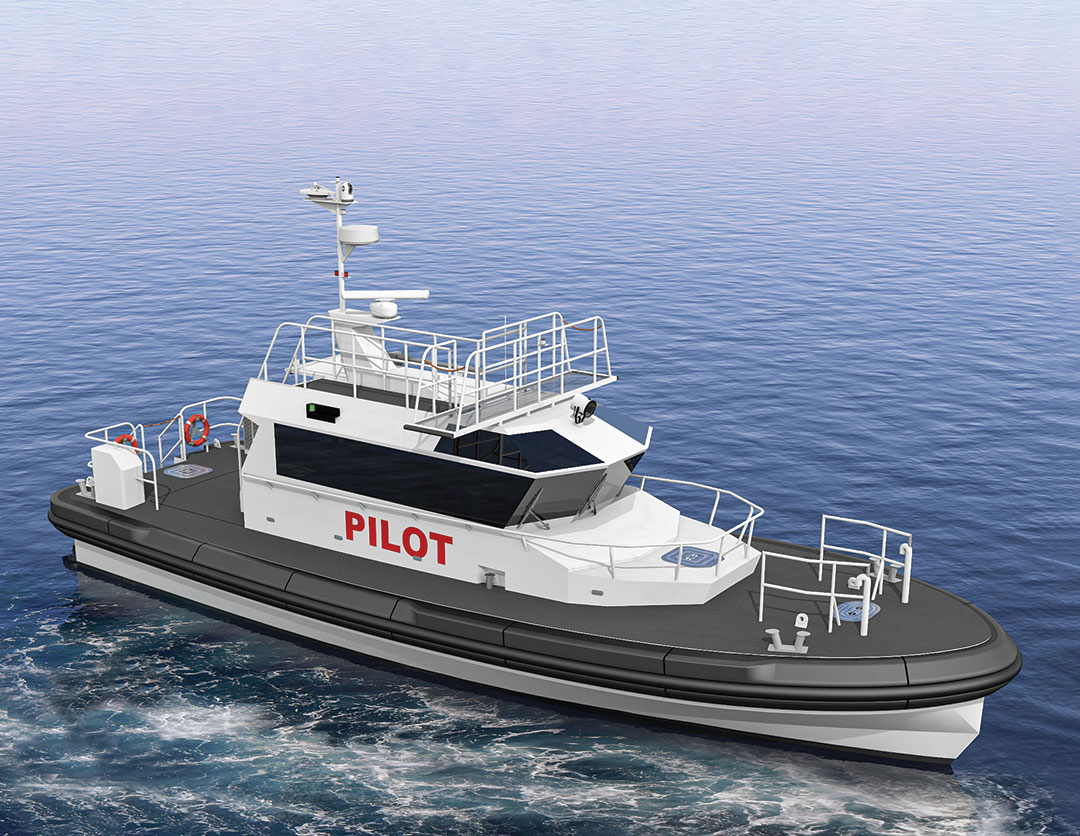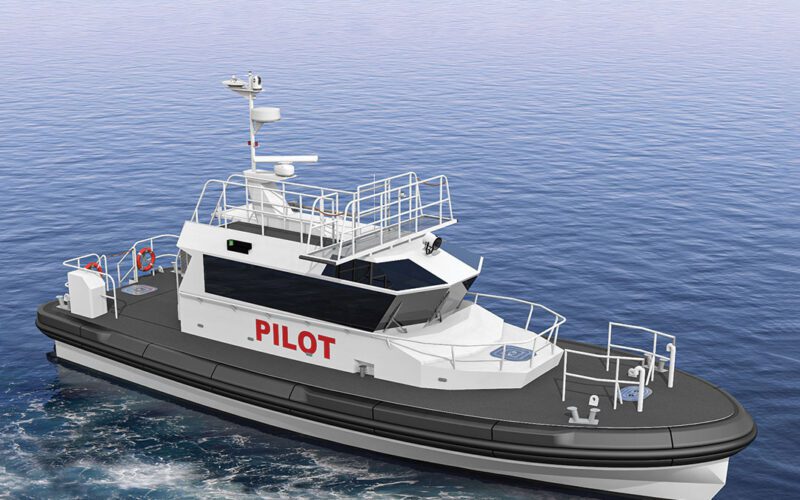
Even in an industry where many occupations come with hazards, the lot of marine pilots has a particularly large range of risks and dangers.
In conditions that are often less than ideal, the pilot boat crew and the pilot in particular must expose themselves to wind and wave in relatively small vessels with minimal protections or anchor points. And, of course, in a death-defying ballet, pilots need to get themselves from one vessel to another, with each vessel pitching and rolling to its own rhythm.
“Over the past several years, the American Pilots’ Association (APA) has been working aggressively with the Coast Guard, classification societies, shipping companies and international organizations like the IMO and ISO to improve pilot transfer safety,” says Captain Jorge Viso, president of the Washington, D.C.-headquartered organization.
Much of the focus of APA is on operational practices, where there is often a vast gulf between the ideal and the actual. But there can also be a technology component to safety, says Clay Diamond, APA Executive Director-General Counsel.
“There are handrails on pilot boats that are generally not required to meet international standards, because these vessels don’t sail internationally, pilot associations work very closely with pilot boat builders to design handrails and boarding and disembarking points on pilot boats,” said Diamond.
Pilot groups are also looking at new equipment and technology that could help for a pilot overboard scenarios, he said.
All of those things are on the mind of Peter J. Duclos, President of Gladding-Hearn Shipbuilding, Somerset, Mass., who notes that his firm has built north of 100 pilot boats over the last 60 years, each representing incremental improvement over its predecessor.
The point, he says, is to be “pilot-centric” and consider everything that impacts those in that role. “One of the most critical things we aim for is good visibility for the boat operator. If an operator can’t see the pilot or is distracted or uncomfortable that will impact whether or not a pilot lands on deck,” he says.
Likewise, the trip from the dock to the vessel can be rough and exhausting in less-than-perfect weather. As a result, he says, Gladding-Hearn has tried to select seating with good shock-absorbing capability so that a pilot arriving on station is “in good physical shape” and not exhausted.
The constant vigilance on the part of the crew and the pilot required to ensure none of them end up in the water can be addressed and made more certain with the choice of railing systems and then designing as much as possible around those systems, he says. “The railings need to visible and intuitive, so pilots don’t have to constantly think about where they are on the vessel,” says Duclos.
That is particularly true when you build or operate a fleet of vessels – small things like maintaining a consistent distance from the rail to the fendering on each vessel in the fleet can pay off for the pilot. “Those things that are fundamental, and if you do it right, the pilot doesn’t notice, they come to take it for granted,” he adds.
Duclos notes that the Harken JR31 railing system has become the go-to solution for his yard, giving pilot and crew the option of safely operating hands-free while on deck. And, specifically with regard to pilot safety, Duclos says with the right rail system, if the pilot lands on deck the crew can grab him or her without themselves being at risk. In northern waters, safety can be further ensured by providing heated railings and heated decks to prevent icing. “Good wipers and good visibility are also very basic,” he adds.
Oakley Jones, East Coast Sales Manager for Harken USA, explains that the “TR” in the product Duclos has adopted refers to ‘tight radius’ and reflects the rail system’s ability to conform to almost any part of a vessel or its structure. “Our designs reflect years of development for marine and terrestrial applications,” he adds, noting the tracks are made of marine-grade aluminum and the components are tested to twice their load requirement.
Still, no system is foolproof and the act of transferring from one vessel to another remains, by its nature, very dangerous.
If a pilot ends up in the water, it is important to have the right recovery tools that can range from a “life swing” or noose, similar to what’s used to bring water skiers back aboard, says Duclos.
“That’s great for someone who can help themselves,” he says. But in a situation where a person in the water is injured of incapacitated, having a water level platform or better-yet a stern platform or recess, can facilitate rescue. “In our boats we have provided that option as well as a stern control station or even a hand-held remote, that can help even a small crew to maneuver successfully for personnel recovery.”
According to Duclos the most complex recovery systems are mechanical frames and nets, often referred to as J-baskets “They are effective and have been used for many years,” he adds.
Lastly, according to Duclos, forward-looking infrared (FLIR) technology − often provided by the company named FLIR − can provide an edge in spotting and recovering an individual in the water. “A person is much warmer than the surrounding water, so they become clearly visible,” he says.
However, he adds, without a FLIR system that is gyro-stabilized, many of the potential advantages provided by the technology can be lost.
While acknowledging their imperfections, Duclos stresses that pilots can be equipped with fall arrest gear, a fall-safety approach widely used in applications on land. But Diamond and Viso offer a chorus of doubt on the subject.
“The idea is good, but the systems can’t distinguish between a fall and a well-planned leap by a pilot” with an arrested leap possibly leaving a pilot in a dangerous situation, says Diamond. Beyond that, he adds that the worst problems pilots face is that the equipment to bring them on board merchant vessels is often in poor shape or not handled correctly, continually putting pilots at risk.
That’s why, just as much as FLIR systems, Diamond says the focus needs to be on equipment and technology such as helmets. “Injuries can occur not only while falling during boarding or disembarking, but also while rescuers are trying to bring the pilot back aboard a pilot boat or rescue craft,” he says.
Personal inflation devices equipped with personal locator beacons − using AIS, 121.5MHz, 406MHz, and VHF), auto-deployable strobe lights − should also be part of the safety mix, says Diamond.
Viso agrees, noting that there have been big improvements in personal locator beacons, including those that broadcast on a band used by rescue helicopters. And, he says, helmets have improved significantly in recent years.
“Older helmets filled with water and didn’t work well but the newer ones that have come out of the experience of sport kayakers, work much better,” he says. •

